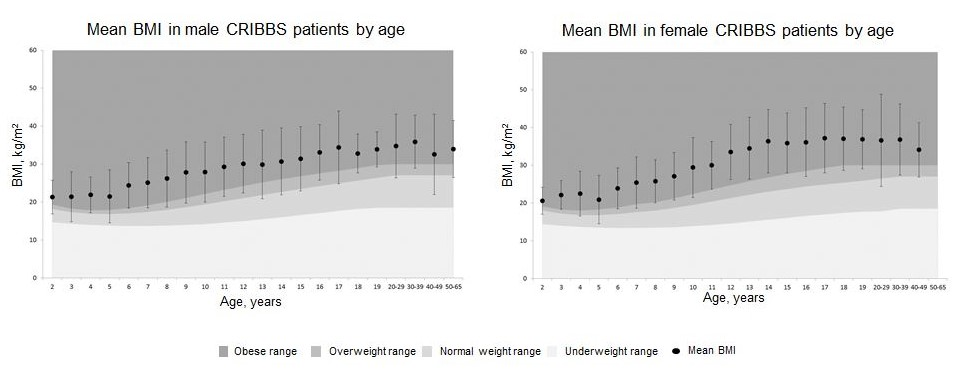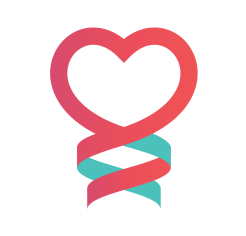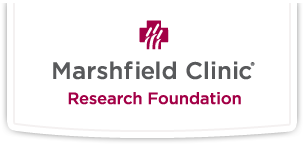Dear CRIBBS Participants
In this Quarterly Newsletter, we want to update you on CRIBBS and our combined effort to bring light to BBS. In the last newsletter, I shared data from CRIBBS reporting the abnormal location of organs in the chest and abdomen known as heterotaxy and situs inversus. I informed you that heterotaxy and situs inversus occur much more commonly in BBS than in the general population. That information will be published in the Journal of Pediatrics very soon. I will share a copy of the publication once authorized by the Journal. The take-home-point is that knowing the position of internal organs is important, especially prior to chest or abdominal surgeries or procedures. Please share the paper with your physicians.
Some of you will receive a letter in the mail requesting the transfer of x-ray images from your orthodontist. The letter is sent to individuals or their parents (depending on age) who have had dental braces. We are teaming up with researchers from the Center for Oral and Systemic Health to examine oral development and bone health in BBS. Our goal will be to give guidance to dentists and orthodontists on the potential role for interventions to improve oral health. Please share the request for release of the dental images with your orthodontist so that they can send us the images. You will be reimbursed for your time and effort.
The questionnaire for CRIBBS will change quite a bit in 2018-19. We will shorten this year’s questionnaire and will be focusing on appetite, diet, activity, and weight. We aim to better understand specific genetic features of BBS along with behavior, weight patterns, and other features that may help guide future therapies. If you have not shared your genetic testing reports with us, please do so: IT IS REALLY IMPORTANT! We are trying to move from simply correlating BBS types (such as BBS1 or BBS2) to examining the types of mutations sometimes referred to as missense mutations, nonsense mutations, deletions, duplications, etc. Your assistance will be invaluable.
Below are growth charts derived from CRIBBS. I believe it is the largest group of individuals with BBS ever reported on and represents hundreds of measurements. All measurements were obtained in a medical setting. The graphs show that weight is an important issue. Obviously, weight affects so many aspects of personal health. Following the charts, Dr. Jeremy Pomeroy will provide insights on information gathered through his research in BBS using accelerometer devices (specialized Fitbit or Smart Watch-like wrist worn devices). He provides important information about improving sleep. I hope you find it helpful.

Graphs represent the investigational efforts of Jeremy Pomeroy, PhD and Astha Nepal, M.D.
SLEEP, HEALTH and INFORMATION & ADVICE FROM CRIBBS
Jeremy Pomeroy, PhD from the Center of Excellence for BBS
Sleep has impacts on all aspects of health. Insufficient sleep and poor sleep quality are associated with obesity, depression, cognitive issues, and heart disease. In many cases, these associations go in both directions. For example, people with poor sleep are at risk for obesity, and obesity puts people at risk for poor sleep. Participants in the CRIBBS registry have been invited to take part in a study of sleep behavior in BBS: so that we can better understand the role of sleep in health and well-being and to better design treatments for people with BBS. So far, over 130 people have taken part in the Objective Assessment of Physical Activity and Sleep Behavior in Patients with Bardet-Biedl Syndrome study by agreeing to wear an accelerometer that measures movement for up to 12 days. Thanks to their participation, we are already learning valuable things about sleep behavior in people with BBS.
The Centers for Disease Control provides recommendations for the hours of sleep per day. These recommendations vary by age group ranging from 14-17 hours a day for newborns, 8-10 hours for teens, and 7-9 hours for adults. Many people who participated in the Objective Assessment of Physical Activity and Sleep Behavior in Patients with Bardet-Biedl Syndrome study frequently do not meet the sleep recommendations. In fact, half of the participants met the recommendations less than four of the 12 nights while wearing the monitor. There are a number of reasons why someone may not get enough sleep and we are working to better understand which of these reasons are most common in people with BBS.
While the total amount of sleep time is important, so is the quality of that sleep. Two important measures of sleep quality are the number of awakenings and sleep efficiency. Waking up many times during the night interferes with sleep quality because when people have many awakenings, they may not get into restorative stages of sleep. Sleep efficiency is the percentage of the night a person spends asleep. A sleep efficiency of at least 85% of the night spent asleep is considered optimal. Just over half of the Objective Assessment of Physical Activity and Sleep Behavior in Patients with Bardet-Biedl Syndrome study in the 6-13 years age group achieved a sleep efficiency of at least 85%. In older age groups, sleep efficiency was much lower with less than a quarter of participants achieving a sleep efficiency of 85% or greater.
Here are some suggestions to improve both the amount and quality of sleep. One of the most important ways to improve sleep is to have a pre-sleep routine. This includes relaxing activities in the hour or so before going to bed. This also means going to bed at the same time each day. Avoid blue light in the two to three hours before going to bed. Light in the blue wavelength is the type of light emitted by environmentally-friendly LED light bulbs as well as television and computer screens. Avoiding blue light by keeping the television, computer, or smartphone off in the two to three hours before bed can help with sleep. Managing fluid intake before bed can help with sleep. Drinking too much water in the two hours or so before sleep can interrupt sleep by requiring trips to the bathroom during the night. Avoiding caffeine for several hours before sleep is important.
Thank you for participation in CRIBBS. If you are not currently participating in CRIBBS, please join the effort by emailing us at CRIBBS@mcrf.mfldclin.edu or by visiting our website at www.bbs-registry.org and requesting to be a part of bringing light to BBS.
Thank you,
Dr Haws

Display in Latest News: Yes
